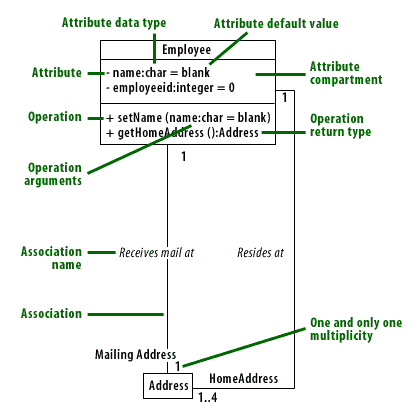Elements of Class Diagrams
Structure Diagram
As the most important example of the new structure diagram type in UML 2, the class diagram can be used by analysts, business modelers, developers, and testers throughout the software development lifecycle. This article offers a comprehensive introduction.
In UML 2 there are two basic categories of diagrams:
Example behavior diagrams are activity, use case, and sequence diagrams.
In UML 2 there are two basic categories of diagrams:
- structure diagrams and
- behavior diagrams.
- class,
- component, and
- object diagrams.
Example behavior diagrams are activity, use case, and sequence diagrams.
Class Diagram in particular
UML 2 considers structure diagrams as a classification; there is no diagram itself called a Structure Diagram.
However, the class diagram offers a prime example of the structure diagram type, and provides us with an initial set of notation elements that all other structure diagrams use. And because the class diagram is so foundational, we will focus on the class diagram's notation set.
You should have an understanding of how to draw a UML 2 class diagram and have a solid footing for understanding other structure diagrams when we cover them later.
Here are the correct matches:
